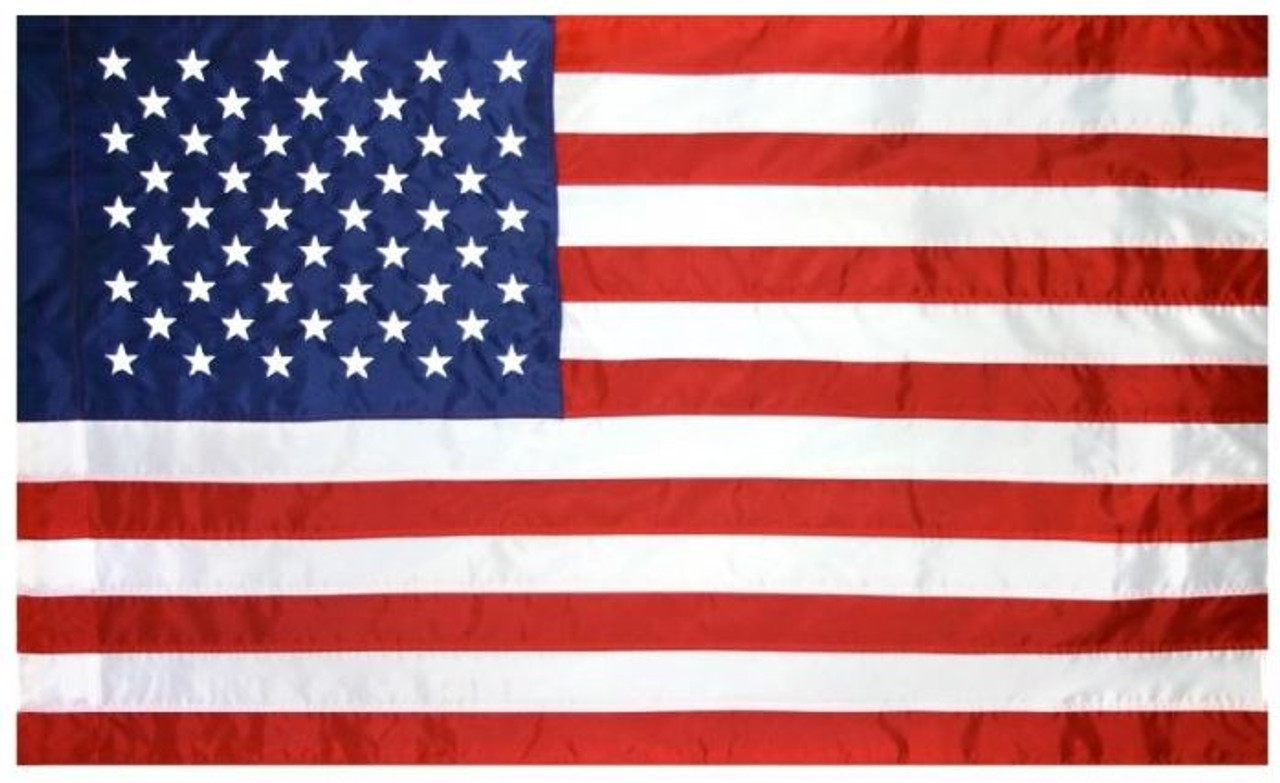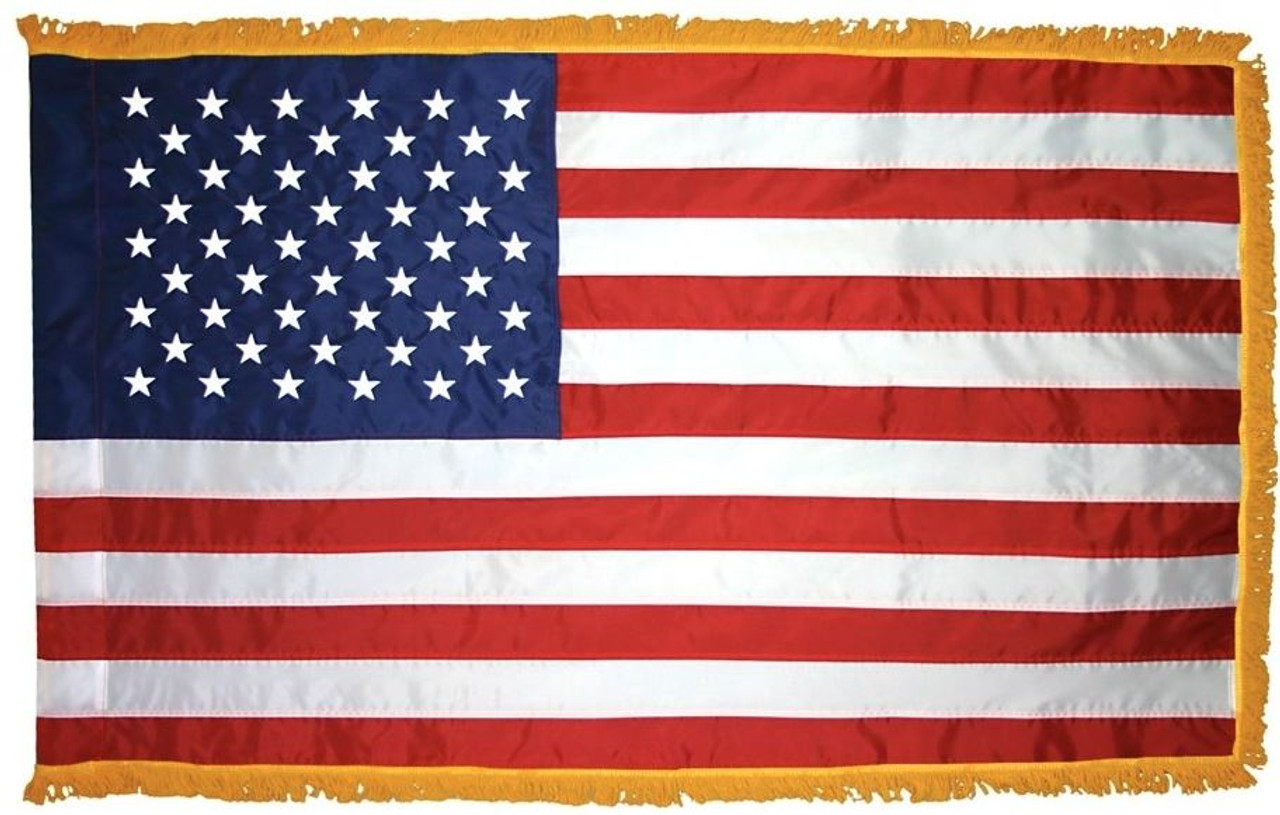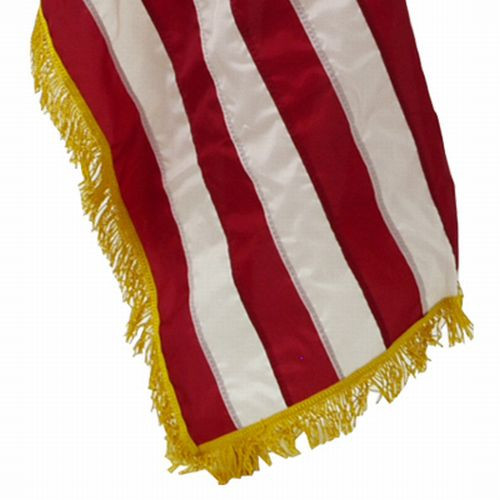Product Description
Elevate your indoor space with our meticulously crafted Indoor American Flags, a symbol of patriotism and pride. Designed exclusively in high-quality nylon, these flags are perfect for displaying your love for the United States in a variety of indoor settings.
History of the American Flag
The American Flag, also known as the Stars and Stripes, Old Glory, and the Star-Spangled Banner, consists of 50 stars on a blue a field with 13 stripes of red and white. The stars represent the 50 states of the United States of America. The 13 red and white stripes represent the 13 British colonies that declared their independence from the Kingdom of Great Britain. The Blue field, the color of the chief, signifies vigilance, perseverance & justice; the Red signifies the hardiness and valor where the White signifies purity and innocence. Old Glory was actually the nickname of a specific U.S. flag, namely, the one owned by sea captain William Driver. He was previously given the flag by the women in his hometown of Salem, Massachusetts, but he only named it Old Glory upon seeing it flying on his ship's mast in 1831. The name later went on to become synonymous with any American flag.
On June 14th, 1777, the Second Continental Congress passed the Flag Resolution, stating “That the flag of the 13 United States be 13 stripes, alternating red and white; and the union be 13 stars, white in a blue field, representing a new constellation.” Soon after the new flag was hoisted by the Continental Army at the Middlebrook encampment. The first official U.S. flag flown during battle was on August 3, 1777, at Fort Schuyler (Fort Stanwix) during the Siege of Fort Stanwix. Massachusetts reinforcements brought news of the adoption by Congress of the official flag to Fort Schuyler. Soldiers cut up their shirts to make the white stripes; scarlet material to form the red was secured from red flannel petticoats of officers' wives, while material for the blue union was secured from Capt. Abraham Swartwout's blue cloth coat. A voucher is extant that Capt. Swartwout of Dutchess County was paid by Congress for his coat for the flag. From this point the origin becomes a little convoluted, with some saying the flag was originally sewn by Betsy Ross from a penciled sketch by George Washington. There isn’t much evidence to support this, either from Washington or Congress. There is also a claim that Rebecca Young sewed the first flag. The most interesting claim is that of Francis Hopkinson, a naval flag designer and a signer of the Declaration of Independence, not only did he claim to design the U.S. Flag, but he also claimed to design the flag of the U.S. Navy. He’s also the only person to have made this claim during their lifetime. Hopkinson had written a letter to Congress on May 25th, 1780. In his first letter he asked for a “Quarter Cask of the Public Wine” as a payment for the designing of the U.S. flag, amongst other governmental seals and the Continental currency. Hopkinson later sent 3 more bills to Congress asking to be paid in cash, but he did not list the U.S. Flag design in these bills. A payment was never made towards Hopkinson, because he already received a salary as a member of Congress.
The current design of the American Flag is on it’s 27th modification. The flag has been officially modified 26 times since 1777. It is the longest-used version of the U.S. flag, flying for 60 years! The 48-star flag flew for 47 years before the 49-star version became official on July 4th, 1959. The 50-star flag was designed by high school senior Bob Heft as a history project in 1958 when we only had 49 states. His teacher gave him a B-minus because it had too many stars. After discussing the grade with his teacher, it was agreed (somewhat jokingly) that if the flag was accepted by Congress, the grade would be reconsidered. On July 4, 1960, Bob Heft found himself in Washington, D.C., standing next to President Dwight Eisenhower, watching as his 50-star flag was raised for the first time over the U.S. Capitol building; it was officially adopted in July of 1960 and Heft’s teacher kept to his agreement and changed the grade to an A.
Variety of Sizes
Our collection features a range of sizes to meet your specific requirements. They range from 2' X 3' to 5' X 8'.
Premium Nylon for Elegance and Durability
Our Indoor American Flags are exclusively crafted from premium nylon, offering a perfect blend of elegance and durability. The lightweight and silky texture of the nylon fabric ensures that the flag drapes beautifully, adding a touch of sophistication to any indoor environment.
Polehem or Polehem with Fringe: Your Choice, Your Style
Customize your indoor flag display with our unique options:
- Polehem: For a sleek and streamlined look, choose the Polehem design. This option features a sturdy pole sleeve, allowing you to effortlessly hang the flag on any standard flagpole with a clean and polished appearance.
- Polehem with Fringe: Add a touch of classic elegance to your indoor space with the Polehem with Fringe design. The meticulously hand-sewn fringe along the bottom edge enhances the flag's visual appeal, providing a traditional and timeless aesthetic.
All of our flags are Made in America!














